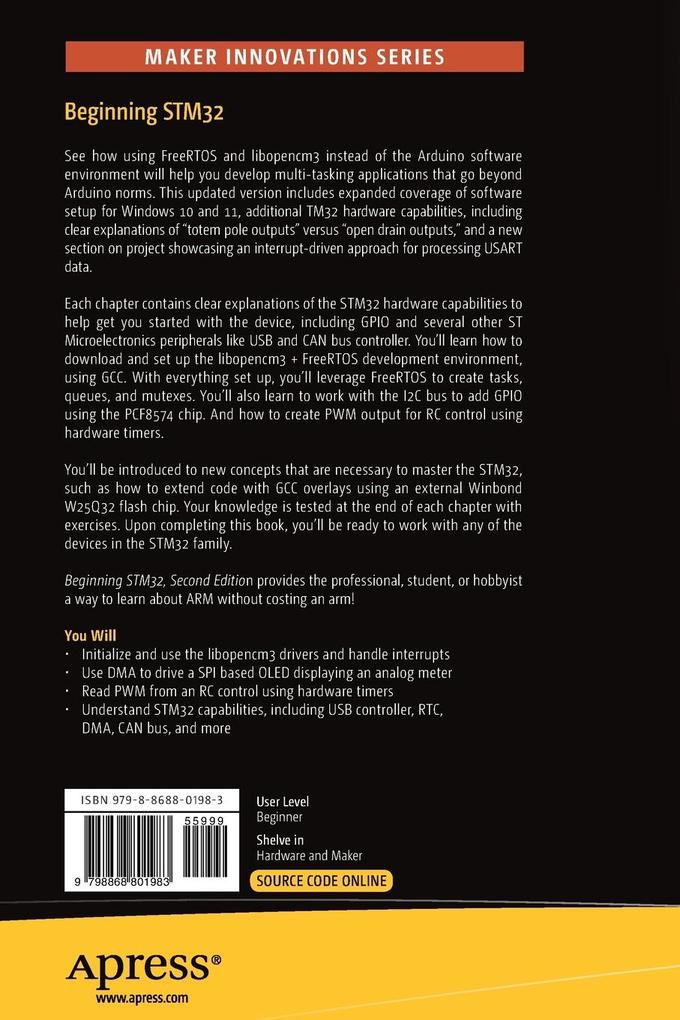See how using FreeRTOS and libopencm3 instead of the Arduino software environment will help you develop multi-tasking applications that go beyond Arduino norms. This updated version includes expanded coverage of software setup for Windows 10 and 11, additional TM32 hardware capabilities, including clear explanations of "totem pole outputs" versus "open drain outputs," and a new section on project showcasing an interrupt-driven approach for processing USART data.
Each chapter contains clear explanations of the STM32 hardware capabilities to help get you started with the device, including GPIO and several other ST Microelectronics peripherals like USB and CAN bus controller. You'll learn how to download and set up the libopencm3 + FreeRTOS development environment, using GCC. With everything set up, you'll leverage FreeRTOS to create tasks, queues, and mutexes. You'll also learn to work with the I2C bus to add GPIO using the PCF8574 chip. And how to create PWM output for RC control using hardware timers.
You'll be introduced to new concepts that are necessary to master the STM32, such as how to extend code with GCC overlays using an external Winbond W25Q32 flash chip. Your knowledge is tested at the end of each chapter with exercises. Upon completing this book, you'll be ready to work with any of the devices in the STM32 family.
Beginning STM32, Second Edition provides the professional, student, or hobbyist a way to learn about ARM without costing an arm!
What You'll Learn - Initialize and use the libopencm3 drivers and handle interrupts
- Use DMA to drive a SPI based OLED displaying an analog meter
- Read PWM from an RC control using hardware timers
- Understand STM32 capabilities, including USB controller, RTC, DMA, CAN bus, and more
Who This Book Is For
Experienced embedded engineers, students, hobbyists and makers wishing to explore the ARM architecture, going beyond Arduino limits.
Inhaltsverzeichnis
Chapter 1. - Introduction. -Chapter 2. Software Setup. - Chapter 3. Power up and Blink. - Chapter 4. GPIO. - Chapter 5. FreeRTOS. - Chapter 6. USART. - Chapter 7. USB Serial. - Chapter 8. SPI Flash. - Chapter 9. Code Overlays. - Chapter 10. Real Time Clock (RTC). - Chapter 11. I2C. - Chapter 12. SPI OLED. - Chapter 13. OLED Using DMA. - Chapter 14. ADC. - Chapter 15. Clock Tree. - Chapter 16. PWM With Timer 2. - Chapter 17. PWM Input with Timer 4. - Chapter 18. CAN Bus. - Chapter 19 CAN Bus Software. - Chapter 20. New Projects. - 21. - Troubleshooting. 22. - Appendix A Answers to Exercises. - 23. Appendix B.







































